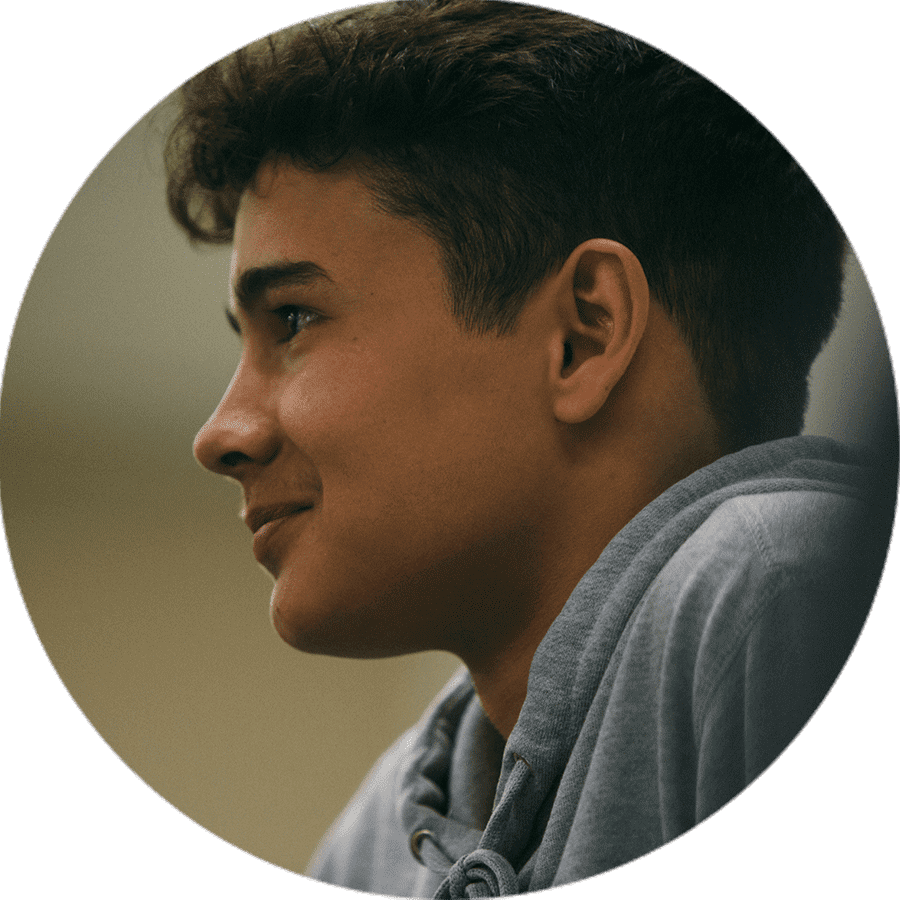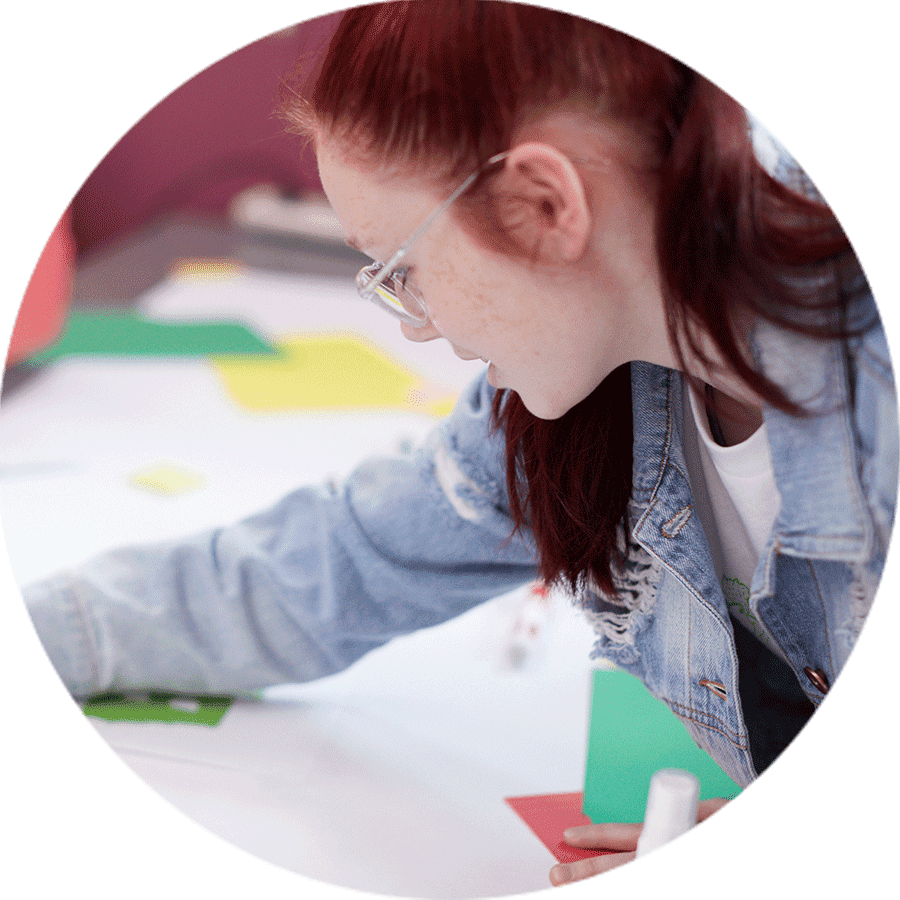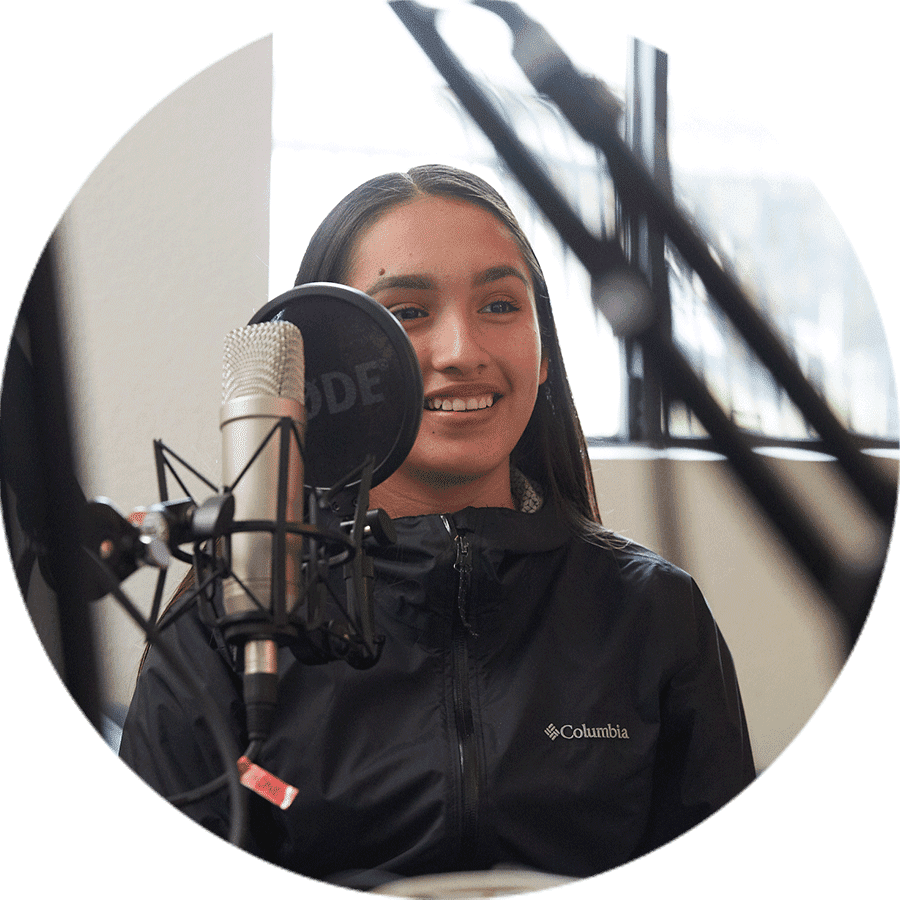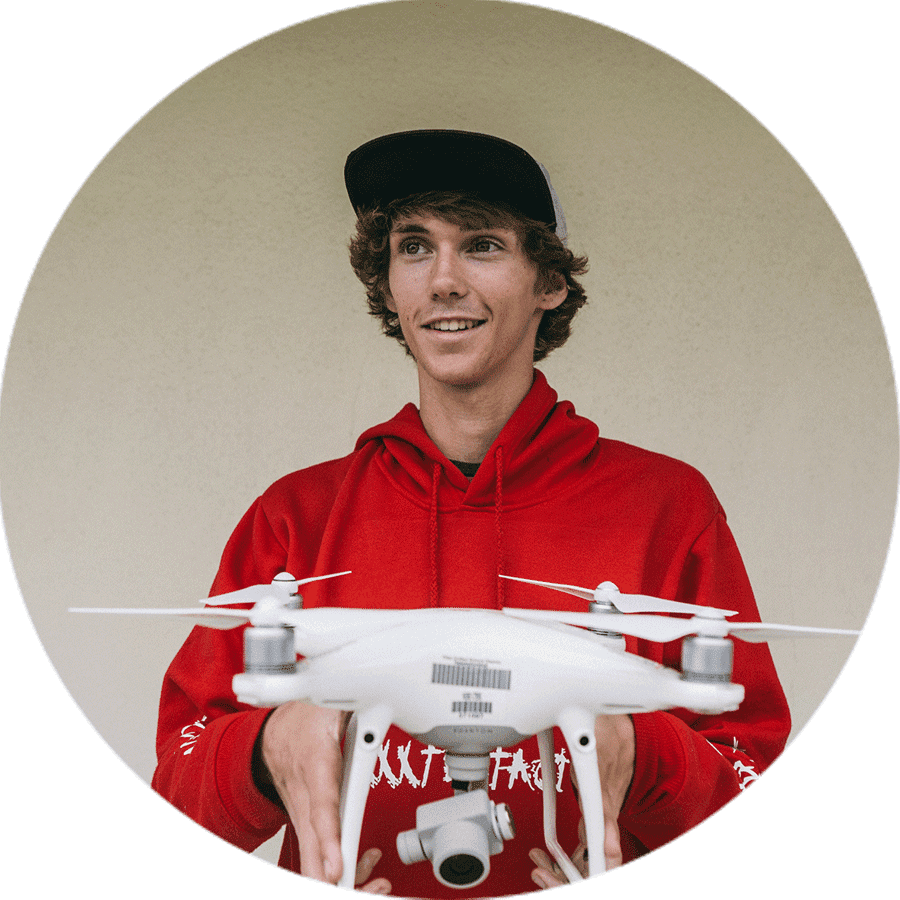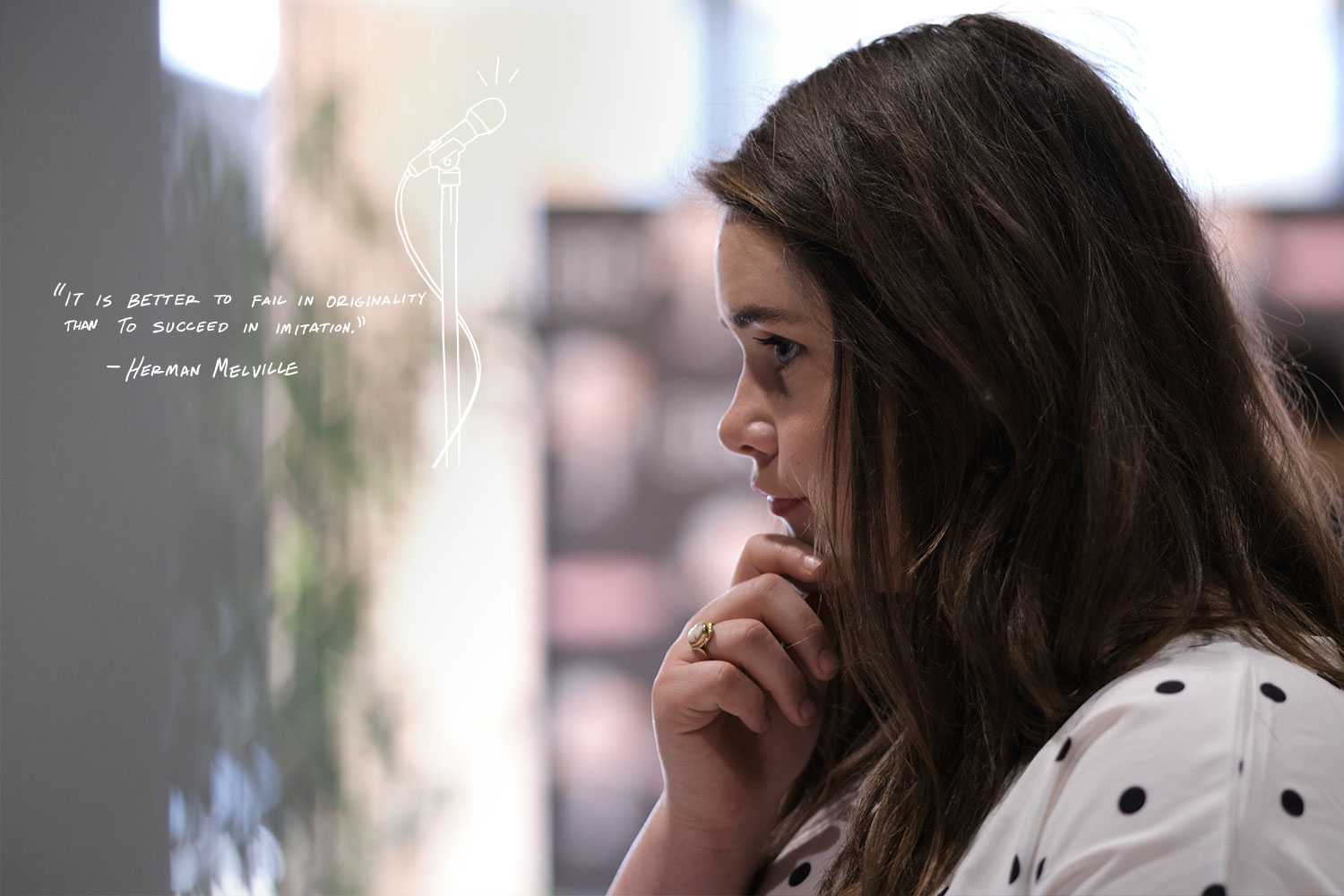3. Inspiring instruction helps students see relationships with the real world and across subject areas.
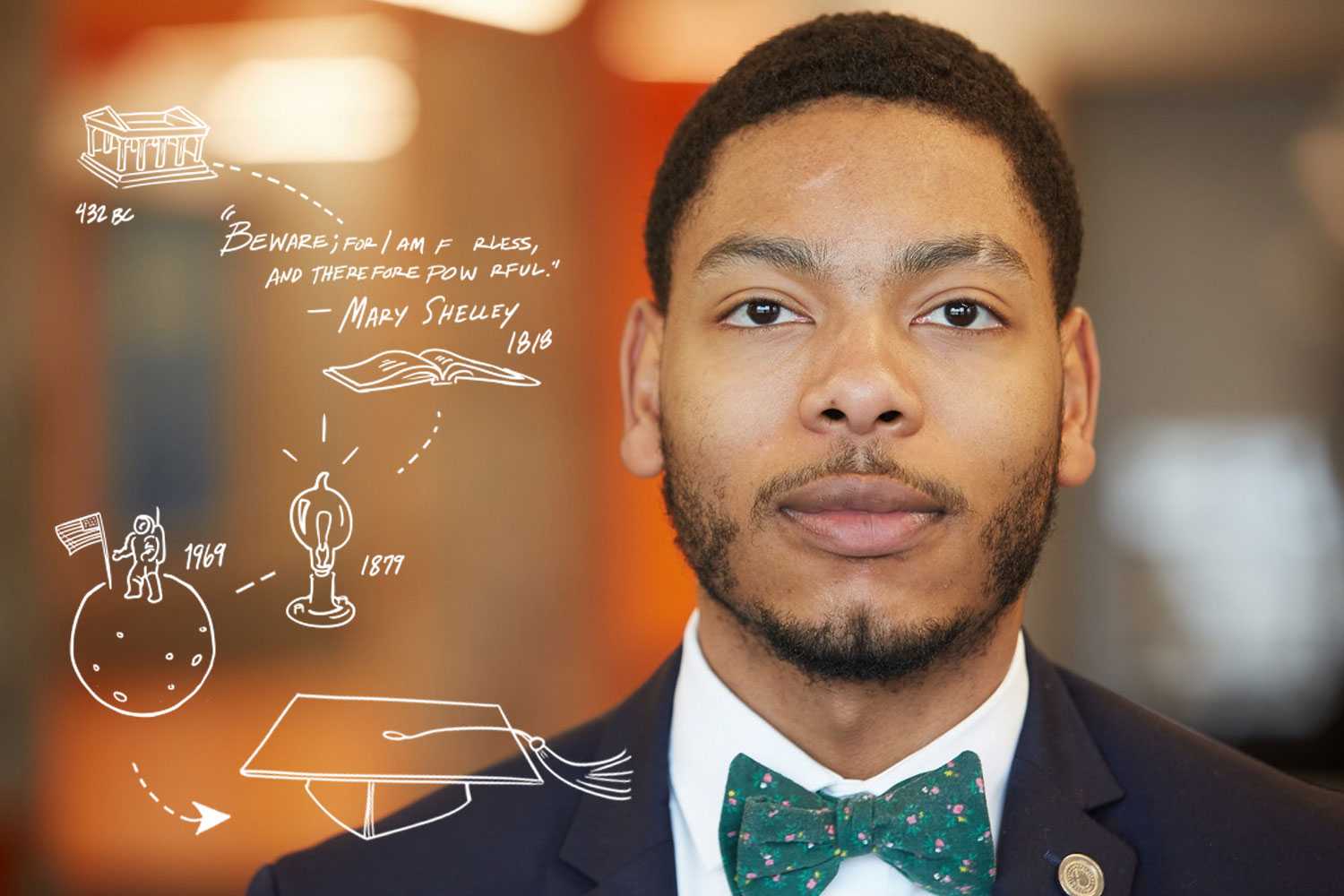
Let’s make learning something that young people want to do.
Fact:
2 in 5 teenagers say they are bored in school nearly every single day.
Source: Pew Research Center
How can school become an authentic part of a young person’s real life? Project-based and interdisciplinary learning can be good places to start. Using these approaches, teachers can create more engaging learning experiences, shift fluidly between individual and group work, and take on projects where students learn across traditional academic disciplines. Students can venture out into the community for projects, expeditions, portfolio-building, and in-depth research. These activities can give students a chance to immerse themselves in academic content, grapple with complex ideas, and develop skills as they demonstrate their learning.
Seymour Papert, a renowned mathematician and educator from MIT, built the Logo programming language to engage young people in project-based learning. He believes critical thinking and identity formation are best fostered through hands-on, real-world projects. A growing number of today’s educators agree.
Project-based learning tends to span several subject areas—after all, real-world problems don’t usually fit into distinct categories. For example, a school project could ask students to build a concept for sustainable housing solutions. Through this, students explore history, science, technology, engineering, and design, while fostering collaborative skills.
Dive Deep
![a student smiling]() Gold Standard PBL
Gold Standard PBLHow is project-based learning different from just “doing projects”? And how can the best project-based learning lead to deeper learning? The Buck Institute explains.
Read and Watch![a student drawing]() Diving into the Project Pool
Diving into the Project PoolWatch this animated overview of Iowa BIG’s “Project Pool,” the foundation for BIG’s all-project design for student learning.
Watch![a student speaking into a microphone]() Learning by Doing
Learning by DoingFind out how students “learn by doing” to get ready for the jobs of the future at Purdue Polytechnic High School in Indianapolis.
Read![a student holding a drone]() Project-based, Place-based
Project-based, Place-basedAt Círculos, an XQ school in Santa Ana, CA, project-based, place-based learning isn’t just a catchphrase. It’s reshaped the way students experience school, even during the pandemic.
Read
Analyze
For students, solving community problems can be a rich and motivating opportunity for project-based learning.
Step 1 – Research
With your team, brainstorm issues your students could research and address. Ask people in local businesses, government, and nonprofits for their ideas. Check the Iowa BIG Project Pool for inspiration.
Step 2 – Reflect
Share findings with your team and discuss these questions:
- How can you incorporate these and other project-based learning opportunities into your school?
- What knowledge, skills, and competencies could students develop through projects like these?
